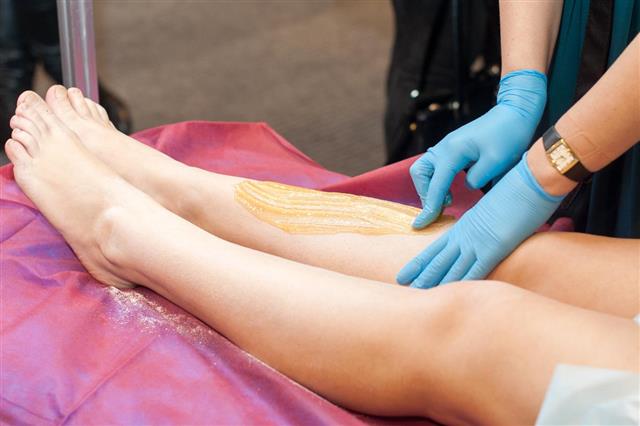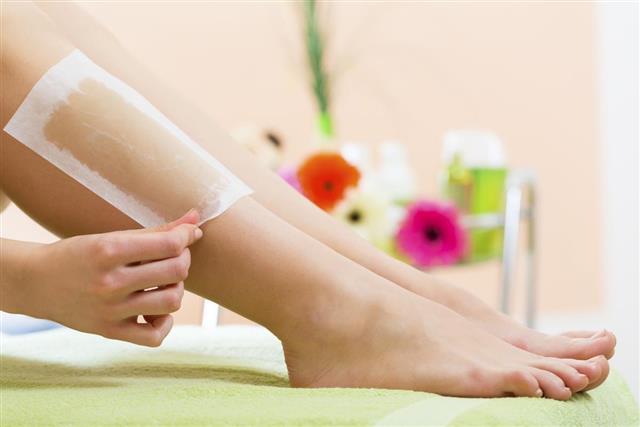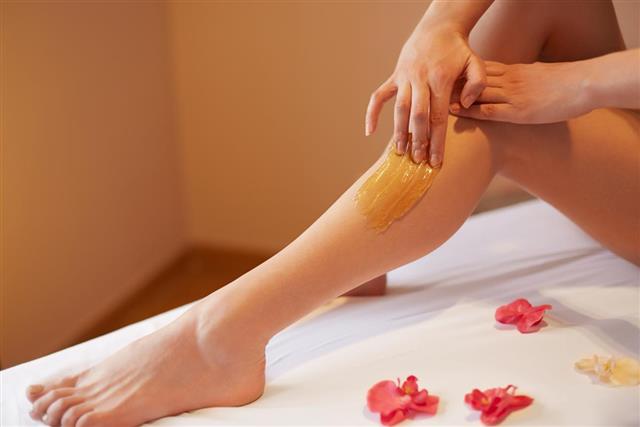
Many women are now opting for sugaring as against waxing because of the beautiful after-effects that have never been experienced upon waxing. However, the benefits of waxing have not completely been ruled out yet. Presented here is a comprehensive view of sugaring vs. waxing, to help you decide which one is a better choice for you.



Before we enter the debate regarding whether sugaring is better than waxing or vice versa, let’s first find out what sugaring actually is. Sugaring is an ancient Middle Eastern hair removal technique that uses a paste made with sugar and other natural ingredients. Though there are modifications to this technique such as sugar waxing, the effects that are experienced with the use of sugaring are completely different, and as some women have put it, divine. Here we try to understand the benefits of sugaring in comparison to waxing, and how it helps you attain that beautiful, clear skin you’ve always desired.
The Difference Between Sugaring and Waxing
Sugaring is a more expensive procedure than waxing. However, it seems to promise many more benefits than waxing. Note that both, sugaring and waxing can be used for hair removal on the lips, arms and legs, brows, back, chest, and bikini line. Here’s a look into the difference between the two.
| Sugaring | Waxing | |
| Ingredients | Sugaring uses natural ingredients such as sugar, water, lemon juice, and essential oils. Effect: This makes you less susceptible to allergies and skin sensitivity, particularly in tender areas of the body. | Waxing ingredients are mostly artificial, that include resins, fragrances, chemicals, preservatives, and dyes. Effect: Use of artificial ingredients makes you more susceptible to the development of allergies and the like. |
| Temperature | During application, the sugaring paste can be used when it is lukewarm. Effect: Sugaring does not cause severe/painful burns. | The wax has to be substantially hot in order for it to be effective. Effect: Waxing is likely to cause burns and can be very harsh on the skin. |
| Application & Removal Technique |
Effect: Sugaring is less painful, solves the problem of ingrown hair, and prevents the development of bumps after the process. Hair growth is finer with each process. |
Effect: Removal of live skin cells means your skin may be stripped off you (in rare cases) if it is too sensitive. Your skin is prone to the development of ingrown hair and bumps after the process. |
| Hygiene | Since sugaring contains natural ingredients, it is hard for bacteria to survive in the sugar paste. It is also easy to clean off with plain water in case of spillage as it does not harden. Effect: Your body is less susceptible to infections and post-hair-removal allergies. | In wax, it is easy for bacteria to survive because of the number of artificial ingredients used. It is also difficult to clean up as it hardens quickly. Effect: Since it is easy for bacteria to survive in wax, it is likely to cause more harm to the skin. |
| Other Parameters |
Effect: If you have been shaving, sugaring may not be very effective for you. On the other hand, with sugaring, you are cleaner for longer, and in emergencies, sugaring is the perfect option for you. |
Effect: You have to wait till your hair grows back to a suitable length to get waxed. |
While there may be several side effects of waxing, there are some that may occur with the process of sugaring too. For one, if you are a novice and try to do it on your own, you are likely to go wrong and cause only hair breakage. This is worse than removing the hair and will cause damage to the hair follicles. An improper sugaring technique can also cause an infection. If you want to opt for sugaring, it is ideal (at least for the first time) to go to a spa or a salon that performs this technique professionally. See the effects on your skin, and then decide whether you prefer sugaring vs. waxing or vice versa. Though in this debate, sugaring seems to be the clear winner when compared to waxing, it is always better to consult a professional before you decide to try something new, rather than experience the effects thereafter.
Disclaimer: This BeautiSecrets article is for informative purposes only and does not, in any way, intend to replace the advice of an expert on the subject.
« Previous Post
Next Post »
Like it? Share it!
- Share
- Tweet
Uncategorized






































